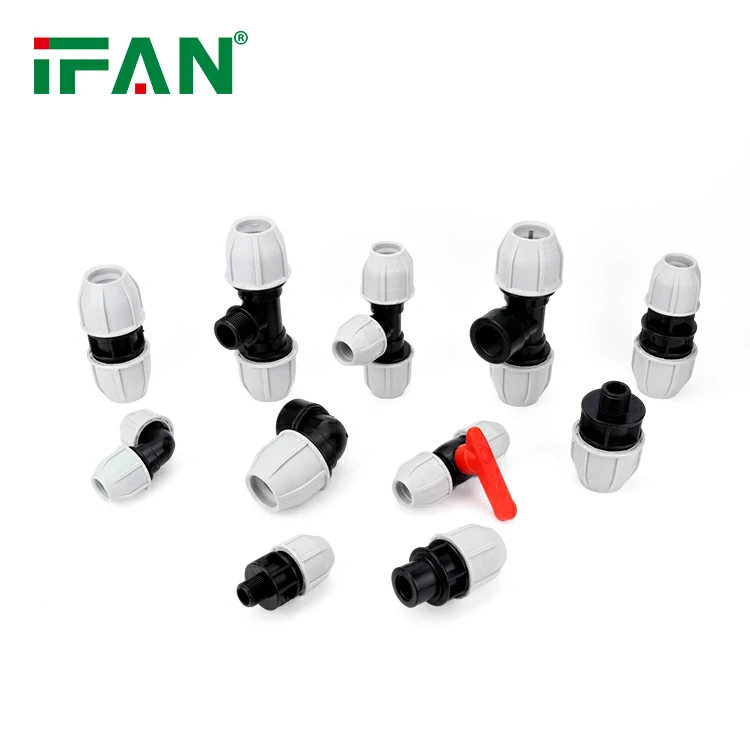Introduction to HDPE Pipe Fittings
HDPE pipe fittings are widely used in water supply, gas systems, and industrial pipelines.
They are known for their strength, flexibility, and resistance to chemicals and corrosion.
Understanding the allowable pressure for HDPE pipe fitting is crucial for safety and reliability.
It ensures the system performs efficiently without leaks, bursts, or premature failure.
Various factors influence pressure ratings, including pipe diameter, wall thickness, and material grade.
Manufacturers often provide pressure class labels like PN6, PN10, or PN16.
Each label indicates the maximum working pressure in bar at a standard temperature.
Proper selection of HDPE pipe fitting based on pressure is essential for long-term operation.
Material Grades and Their Pressure Tolerance
HDPE pipes and fittings are classified by PE grades such as PE63, PE80, and PE100.
PE100 has the highest strength and pressure capacity among the commonly used grades.
Higher PE grades can handle higher pressure levels without significant deformation or failure.
For instance, PE100 pipes with PN16 rating can withstand 16 bar at 20°C.
However, pressure tolerance decreases with increased temperature or external stress.
A PE80 HDPE pipe fitting may not perform well under the same pressure as PE100.
Always match the fitting grade with the pipe and intended application.
Material grade directly affects the fitting’s reliability under pressure.
Impact of Pipe Size and Wall Thickness
Pipe diameter and wall thickness influence the allowable pressure for HDPE pipe fitting.
Larger diameter pipes with thin walls have lower pressure tolerance.
Smaller diameter pipes with thicker walls can withstand higher internal pressures.
HDPE pipes are rated by SDR (Standard Dimension Ratio), which is diameter divided by wall thickness.
A lower SDR number indicates thicker walls and higher pressure capacity.
For example, SDR11 pipes are thicker and stronger than SDR17 pipes of the same diameter.
HDPE pipe fitting must match the SDR class of the connected pipes.
Incorrect matching can lead to joint failure or pressure imbalance.
Temperature’s Effect on Pressure Ratings
Temperature changes can greatly affect the allowable pressure of HDPE pipe fittings.
The standard pressure rating is usually based on 20°C operating temperature.
At higher temperatures, the strength of HDPE material decreases.
For example, a PN10 fitting rated at 20°C may only handle 6–8 bar at 40°C.
Prolonged exposure to heat softens the polymer, reducing its pressure resistance.
In hot water systems, derating factors must be applied to pressure values.
Manufacturers provide derating tables for different temperature ranges.
Always consider temperature conditions when selecting HDPE pipe fittings for pressure systems.

Fitting Type and Joining Method Considerations
Different HDPE pipe fitting types may affect pressure performance.
Common fittings include elbows, tees, couplings, reducers, and flanges.
Fusion-welded fittings generally offer higher pressure integrity than mechanical joints.
Electrofusion fittings provide strong, leak-proof connections in pressurized systems.
Compression fittings are easier to install but may not handle high pressure as effectively.
Proper joint preparation is crucial, especially for butt fusion and electrofusion methods.
Poor welding techniques can compromise pressure performance and cause leaks.
Choose fitting types and joining methods based on system pressure and criticality.
Industry Standards and Testing Requirements
Several standards define the allowable pressure for HDPE pipe fittings.
Common references include ISO 4427, ASTM D3035, and EN 12201.
These standards cover material properties, dimensions, and pressure ratings.
Each HDPE pipe fitting must pass hydrostatic pressure testing before certification.
Tests simulate long-term operation under pressure and identify potential weak points.
For example, fittings must withstand 1.5 times the working pressure in tests.
Always use certified fittings tested under recognized standards.
Certified fittings ensure pressure safety and performance compliance.
Application Examples and Pressure Demands
Different applications have different pressure demands for HDPE pipe fittings.
Municipal water supply systems typically use PN10 or PN16 rated fittings.
Industrial applications like chemical transport may require PN20 or higher ratings.
Agricultural irrigation systems often operate under lower pressures, using PN6 fittings.
Underground gas networks demand strict pressure controls and fusion-welded fittings.
In mining, HDPE pipe fittings face both pressure and abrasion stresses.
Selecting the correct pressure class ensures system safety and cost efficiency.
Real-world examples highlight the importance of proper fitting selection.
Conclusion and Best Practices
Understanding allowable pressure is essential for choosing the right HDPE pipe fitting.
Consider material grade, SDR, temperature, and joining method in your selection process.
Always refer to manufacturer pressure charts and testing standards.
Avoid mixing fittings of different SDRs or pressure classes.
Inspect and test all joints before commissioning the system.
HDPE pipe fittings perform well when correctly matched to pressure requirements.
Proper planning ensures long service life and prevents costly failures.
Use expert advice and certified products for best results under pressure.

